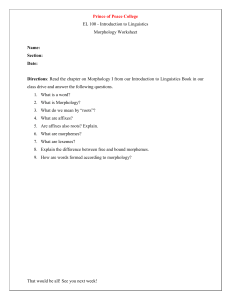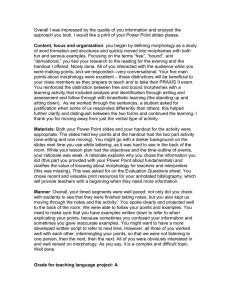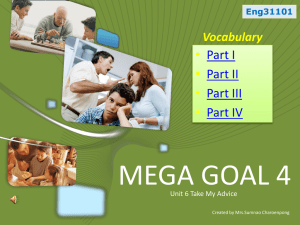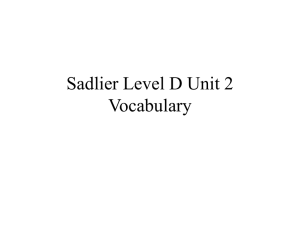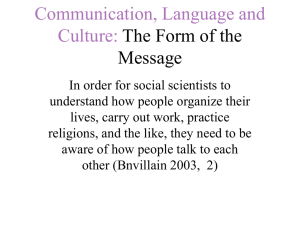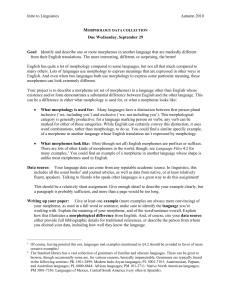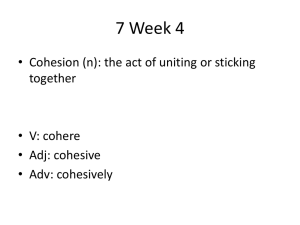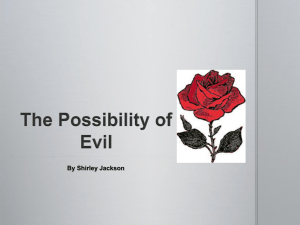Implications from Morphology for Teaching Reading and L2
advertisement
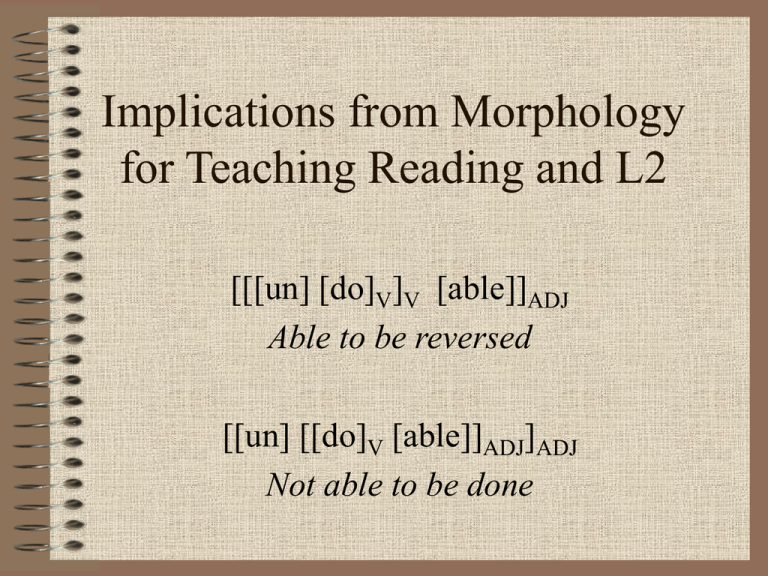
Implications from Morphology for Teaching Reading and L2 [[[un] [do]V]V [able]]ADJ Able to be reversed [[un] [[do]V [able]]ADJ]ADJ Not able to be done Reading and morphology • Word recognition view of reading – Structural analysis to learn new words • Sociopsycholinguistic view of reading – Structural analysis to learn about language – Learning new words may be an end result Structural analysis: Knowledge of word parts and categories • Not all words have multiple parts (mosquito) • Some morphemes are no longer recognizable (chauvinist) • Where to divide the word is not always clear (cog-nate co+gnatus; cog-ni-tion co+gnoscere); i.e. morphology, phonology and orthography don’t coincide • Morphemes may have multiple meanings/functions (un+do vs. un+happy; also ad-, re-, in-) • Phonological & orthographic changes (co+habit; col+late; com+bine) • Words have different historical backgrounds (cohune co+hune) • Parts to whole is more difficult than whole to parts Vocabulary – learned or acquired? • Learning view: Preteaching vocabulary – Content predetermined by teacher – Out of context (Why can’t you say condolences?) – Decoding: X = Y • Acquisition view: Building background – Build concepts, not just definition/label; “language and reality are dynamically interconnected” (p. 197); compadre – Build common knowledge – “frontloading” – Build “word consciousness” (Miss Alaineus) • Vocabulary size studies suggest children acquire vocabulary at the rate of about 5000 words per year. What about older L2 learners? Academic language • Cognitively demanding/unfamiliar topics • Less contextual support (visual, gestures, background knowledge) • Learners have less exposure; exclusive to school setting • Not i+1, so acquisition doesn’t occur • Academic language register comes from different historical sources than conversational register • Content-specific (protagonist) vs. general academic (therefore) Developing academic language • Make input comprehensible – Adapt text – Build background knowledge – Graphic organizers to represent key concepts • Build on background – Language – identify cognates; patterns • pre+dict pre+decir – Content • Linguistic [text analysis]
